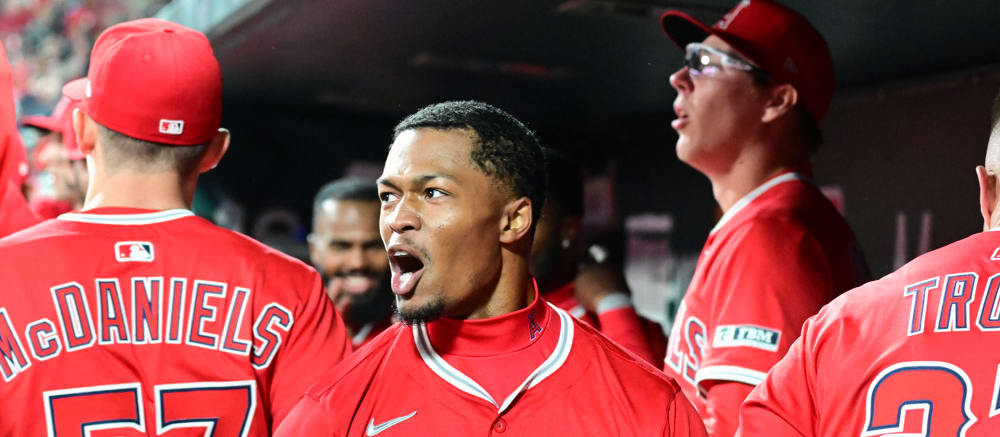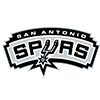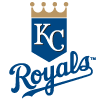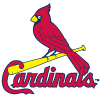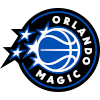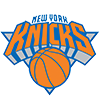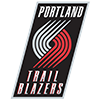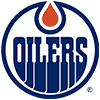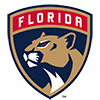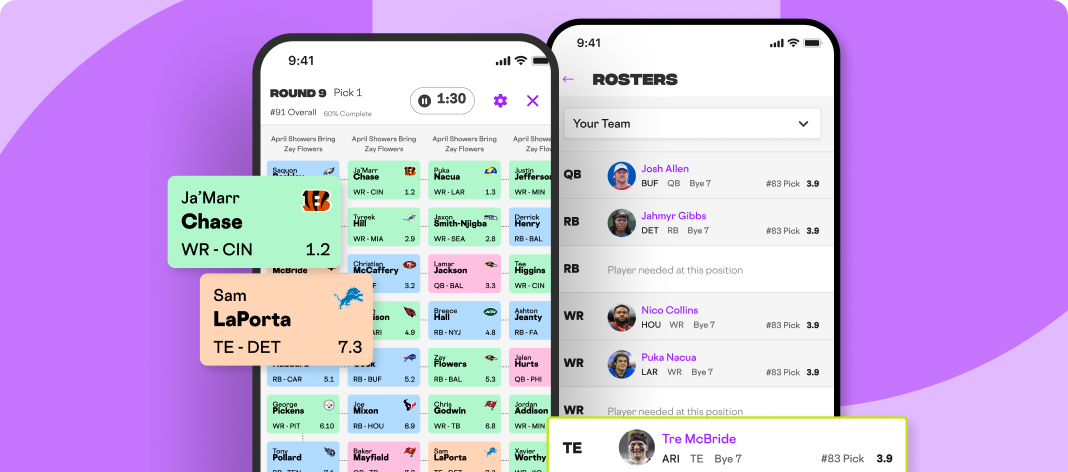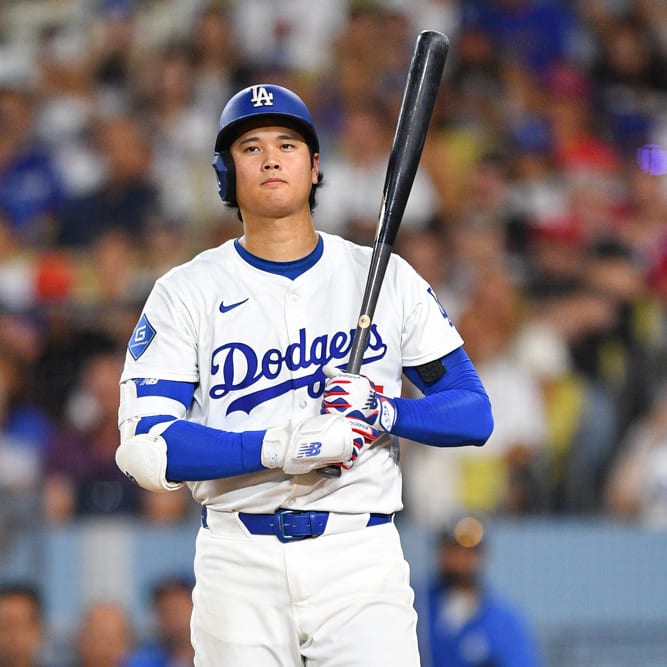Mid-April is possibly the most confusing time in fantasy baseball. Enough time has passed that it would clearly be foolish to ignore players' performances entirely, something you can mostly get away with doing after just a series or two. At the same time, it's still incredibly early, and you don't want to panic and overreact to a two-week sample.
Here are some things which were true exactly two weeks into last season, in case anyone needs a reminder to not overreact:
- Spencer Steer was hitting .372/.471/.721, good for a 218 wRC+. He hit .213/.306/.377 (86 wRC+) the rest of the way.
- MJ Melendez was hitting .333/.429/.694, good for a 206 wRC+. He hit .194/.257/.372 (73 wRC+) the rest of the way.
- Anthony Volpe was hitting .372/.460/.581, good for a 199 wRC+. He hit .234/.280/.348 (77 wRC+) the rest of the way.
- Alex Kirilloff was hitting .324/.385/.647 (183 wRC+). He hit .168/.237/.312 (55 wRC+) over the next two months and then was placed on the injured list with back and nerve issues. He suffered a setback while rehabbing in August and announced his retirement from baseball at age 26 in October.
The players listed above didn't just have good surface stats, they also had good underlying numbers, with all four producing strikeout rates below 20 percent through the first two weeks. They were exactly the sort of players it made sense to buy into this time last year, yet it didn't work out for any of them, spectacularly so in
Mid-April is possibly the most confusing time in fantasy baseball. Enough time has passed that it would clearly be foolish to ignore players' performances entirely, something you can mostly get away with doing after just a series or two. At the same time, it's still incredibly early, and you don't want to panic and overreact to a two-week sample.
Here are some things which were true exactly two weeks into last season, in case anyone needs a reminder to not overreact:
- Spencer Steer was hitting .372/.471/.721, good for a 218 wRC+. He hit .213/.306/.377 (86 wRC+) the rest of the way.
- MJ Melendez was hitting .333/.429/.694, good for a 206 wRC+. He hit .194/.257/.372 (73 wRC+) the rest of the way.
- Anthony Volpe was hitting .372/.460/.581, good for a 199 wRC+. He hit .234/.280/.348 (77 wRC+) the rest of the way.
- Alex Kirilloff was hitting .324/.385/.647 (183 wRC+). He hit .168/.237/.312 (55 wRC+) over the next two months and then was placed on the injured list with back and nerve issues. He suffered a setback while rehabbing in August and announced his retirement from baseball at age 26 in October.
The players listed above didn't just have good surface stats, they also had good underlying numbers, with all four producing strikeout rates below 20 percent through the first two weeks. They were exactly the sort of players it made sense to buy into this time last year, yet it didn't work out for any of them, spectacularly so in Kirilloff's case.
But the lesson here can't be to ignore everything you see in the first two weeks. If you wait for players to prove it to you before picking them up, you'll miss on every single breakout, as one of your more aggressive leaguemates will beat you to the punch long before the player in question has time to prove his early performance is legitimate.
The best way to approach this period of the season is therefore to be aggressive with pickups while remaining as cautious as possible with drops. You can really hurt your team if you wind up dropping an early-round pick too soon, costing yourself five-plus months of excellent production from someone you thought you were counting on due to your impatience.
But if you aren't willing to pick up a player uncomfortably soon into his breakout, it might be too late, as is the case with everyone who missed out on the first player on this list in last week's FAAB period.
RISERS
 Kyren Paris, 2B, Angels: To paint a picture of how out-of-nowhere Paris' start to the season has been, let's start with a simple table:
Kyren Paris, 2B, Angels: To paint a picture of how out-of-nowhere Paris' start to the season has been, let's start with a simple table:
| Level (Years) | PA | OPS | K% |
|---|---|---|---|
| MiLB (2019-24) | 1,436 | .757 | 30.7% |
| MLB (2023-24) | 105 | .378 | 32.4% |
| MLB (2025) | 30 | 1.653 | 20.0% |
Paris was an unremarkable minor leaguer across a not insignificant sample, then a very poor major leaguer in a limited sample across parts of two seasons. In both cases, he struck out far too often. This year, he's cut his strikeout rate to around league average and looks like one of the best players in baseball through two seasons. While the sample size is obviously tiny, the fact that he's still so young (23) and the fact that he's been not just good but incredibly good forces us to consider whether this might be the start of a genuine breakout.
Signs point in opposite directions. If you want to bet against Paris, there are plenty of reasons to do so. He was never a particularly interesting prospect, because he never showed the type of power necessary to overcome his significant swing-and-miss issues, topping out at 14 homers in 113 Double-A games in 2023. His five barrels out of 19 batted balls this year give him an incredible 26.3 percent barrel rate, but his average exit velocity (88.9 mph) remains in the 40th percentile. Additionally, while he's improved his strikeout rate from awful to average over a tiny sample, his whiff rate (39.6 percent) remains terrible, sitting in the fourth percentile. If he keeps that up, his strikeout rate will shoot past 30 percent before long.
On the other hand, there's room for an optimistic case here. For starters, Paris' minor-league numbers may reflect his true talent less than most players'. He was drafted out of high school and then lost what would have been his first full professional season due to COVID, then lost time due to frequent but unrelated injuries (a broken hamate, strained hamstring and fractured fibula).
Second, and perhaps most importantly, he trained with Aaron Judge's swing coach Richard Schenk over the winter, offering narrative support to his early-season hot streak and a reason to believe he's a different player than he used to be. Paris' previous struggles all took place with a different swing, so it might be a mistake to weigh them too heavily.
And third, even if all of Paris' improvements at the plate prove to be a mirage, he does have 96th percentile sprint speed and plays for a team that loves to run. As long as he's playing somewhat regularly, he'll help out in at least one category. Despite the doubts, he's worth adding in most formats just to see whether or not he's for real based on that stolen base upside alone.
 Tyler Soderstrom, 1B, Athletics: While Paris' hot start has come out of relatively nowhere and comes with plenty of reasons for skepticism, another 23-year-old in the NL West put together a performance over the first two weeks that's arguably even more exciting. Here's the same simple table we used for Paris, though this time I've split Soderstrom's major-league line into individual seasons since the samples are large enough to stand on their own:
Tyler Soderstrom, 1B, Athletics: While Paris' hot start has come out of relatively nowhere and comes with plenty of reasons for skepticism, another 23-year-old in the NL West put together a performance over the first two weeks that's arguably even more exciting. Here's the same simple table we used for Paris, though this time I've split Soderstrom's major-league line into individual seasons since the samples are large enough to stand on their own:
| Level (Years) | PA | OPS | K% |
|---|---|---|---|
| MiLB (2021-24) | 1,288 | .871 | 25.5% |
| MLB (2023) | 138 | .472 | 31.2% |
| MLB (2024) | 213 | .743 | 24.9% |
| MLB (2025) | 54 | 1.197 | 18.5% |
Soderstrom was a first-round pick in 2020 as a bat-first catcher who might not stick behind the plate. He primarily played catcher during his brief debut in 2023, but significant contact issues cast doubt on the "bat-first" label. He was moved almost exclusively to first base last season and fared much better, with his strikeout rate dropping to acceptable levels, but he didn't exactly stand out at the plate despite a 14.6 percent barrel rate.
This year, he's made gains in his bat-to-ball skills yet again while maintaining excellent hard-hit numbers, posting a 18.4 percent barrel rate through 13 games. The Athletics are buying in, moving him up from sixth in the order on Opening Day to third in the last three games. Toss in the fact that the team's new park in Sacramento looks very hitter-friendly and you have a recipe for Soderstrom to break out in a big way this season.
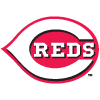 Hunter Greene, SP, Reds: Greene was a former second-overall pick entering his age-25 season on the back of a breakout campaign which saw him produce a a 2.75 ERA and 1.02 WHIP, yet you could grab him at an average pick of 91 in the NFBC Main Event or 97 in the RotoWire Online Championship. Why was he so affordable despite the obvious upside? Durability questions, primarily, as he's topped out at 26 starts and 150.1 innings and had an elbow scare late last season (albeit one he came back from).
Hunter Greene, SP, Reds: Greene was a former second-overall pick entering his age-25 season on the back of a breakout campaign which saw him produce a a 2.75 ERA and 1.02 WHIP, yet you could grab him at an average pick of 91 in the NFBC Main Event or 97 in the RotoWire Online Championship. Why was he so affordable despite the obvious upside? Durability questions, primarily, as he's topped out at 26 starts and 150.1 innings and had an elbow scare late last season (albeit one he came back from).
Greene can't disprove any durability-related doubts after just three starts, but he's doing a great job of dispelling any performance-related worries. His ERA estimators (4.19 xFIP, 3.81 SIERA) didn't back up his excellent ERA last season, as he benefited from a .237 BABIP, an 80.5 percent strand rate and a 6.9 percent HR/FB rate. He also saw his strikeout rate dip below 30 percent for the first time, coming in at 27.7 percent.
Through three starts this year, his strikeout has jumped back to 30.7 percent, but more impressively, his walk rate, which has never finished below 9.0 percent, sits at 4.0 percent. He would have been at 2.7 percent in that category had he not been left in to walk Matt Chapman on his 106th pitch of the game while trying to get the final out of his shutout against the Giants on Monday. The result of Greene's newfound control (as well as a somewhat unnecessary extra tick or two of velocity) has been a 1.31 ERA and 0.63 WHIP through three starts.
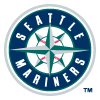 Logan Gilbert, SP, Mariners: While Greene's performance through the first two weeks may be marginally more impressive relative to expectations, it's Gilbert who's probably been the best pitcher in the league so far. At least, that's the story as told by K-BB%, the best stat to use if you're going to sort pitchers by a single metric.
Logan Gilbert, SP, Mariners: While Greene's performance through the first two weeks may be marginally more impressive relative to expectations, it's Gilbert who's probably been the best pitcher in the league so far. At least, that's the story as told by K-BB%, the best stat to use if you're going to sort pitchers by a single metric.
K-BB% Leaders, min. 3 GS | |
|---|---|
| Pitcher | K-BB% |
| Logan Gilbert | 33.8% |
| MacKenzie Gore | 32.8% |
| Cole Ragans | 29.9% |
| Zack Wheeler | 28.2% |
| Sonny Gray | 27.4% |
Gilbert has paired his typically excellent control — his 4.6 percent walk rate is an exact match for last season and 0.1 points better than he managed in 2023 — with newfound bat-missing ability, as his 38.5 percent strikeout rate blows away his previous career high of 27.4 percent (set last year). That spike in strikeout rate is backed up by a similar jump in whiff rate, which has gone from 31.7 percent in 2024 to 39.0 percent in 2025.
Gilbert doesn't have far to rise, considering he was already the fifth pitcher off the board in the NFBC Main Event, but he's done everything he can so far to make the case that he was underdrafted. Could he finish the year as the best pitcher in baseball? Should he already be higher than third in the AL Cy Young odds?
It's not hard to make that case, but I'll offer one brief counterargument: all three of Gilbert's start to date came at home, and T-Mobile Park suppresses scoring far more than any other park in baseball. Gilbert will of course get to make half of his starts going forward at the very same park, but only half, not 100 percent as has been the case to date.
FALLERS
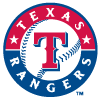 Marcus Semien, 2B, Rangers: Semien still has the thing which gives him most of his fantasy appeal: tons of playing time. Over the last four seasons, Semien has averaged 730 plate appearances, while no one else has even averaged 700. This year, he's yet to have a day off, despite the fact that the Rangers suggested he could receive more rest this season.
Marcus Semien, 2B, Rangers: Semien still has the thing which gives him most of his fantasy appeal: tons of playing time. Over the last four seasons, Semien has averaged 730 plate appearances, while no one else has even averaged 700. This year, he's yet to have a day off, despite the fact that the Rangers suggested he could receive more rest this season.
Perhaps those days off will start arriving soon, as Semien already looks like he needs one. He's played all 13 games and has just six hits (one homer), slashing .122/.189/.184. His .139 BABIP is certainly contributing to his struggles, but his xBA is only .195, so it's fair to say most of his slump is in fact his fault.
Semien's 22.6 percent strikeout rate is right around league average, but he finished at exactly 14.6 percent in both 2023 and 2024, and he's not someone who's likely to have much success with a merely average amount of contact. That would be true even if his hard-hit rate sat in the 35-37 percent right like it has the last three seasons, but this year, he's all the way down at 29.7 percent. There's plenty of time for Semien to turn things around, but so far, he looks like a 34-year-old with too many miles on his legs.
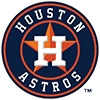 Yainer Diaz, C, Astros: Diaz always had an unusual profile, even when things were going well. He's had a poor defensive reputation, and his real-world offensive value isn't quite as high as his fantasy value would suggest due to his lack of patience (career 3.7 percent walk rate). The multiple notable weaknesses in his game as well as the fact that Yordan Alvarez looks set to spend even more time at designated hitter this season, hurting Diaz's chances of getting to 600-plus plate appearances, led me to pick the catcher as my bust for our Staff Hitter Busts article.
Yainer Diaz, C, Astros: Diaz always had an unusual profile, even when things were going well. He's had a poor defensive reputation, and his real-world offensive value isn't quite as high as his fantasy value would suggest due to his lack of patience (career 3.7 percent walk rate). The multiple notable weaknesses in his game as well as the fact that Yordan Alvarez looks set to spend even more time at designated hitter this season, hurting Diaz's chances of getting to 600-plus plate appearances, led me to pick the catcher as my bust for our Staff Hitter Busts article.
Through two weeks, my bust pick looks prescient, but I can't say I saw something quite like this coming. In nine games, he's hitting just .061/.139/.061. He's chasing less this season but still far too often (40.4 percent). That doesn't seem to be the product of a better eye but rather a more passive approach overall, as he's also dropped his in-zone swing rate to 71.2 percent, down from a career mark of 76.6 percent.
The newfound passivity has helped him walk at a league-average clip (8.3 percent), but he's suddenly striking out 27.8 percent of the time. He's not going to be the high-average bat he's been the last two seasons if he keeps that up. Diaz needs to either prove that the approach change is working soon or abandon it and revert to his old ways if he's going to live up to his draft-day price, and even then, the playing-time concerns may prevent him from doing so.
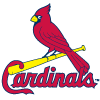 Willson Contreras, C/1B, Cardinals: The first two weeks couldn't have gone much worse for drafters like me who bought into the theory that Contreras was one of this year's top values at catcher given the playing time available to him as the Cardinals' everyday first baseman. Contreras has indeed played nearly everyday between first base and DH, sitting just once in 12 games, but he's played so poorly that it's almost time to wonder how long that will continue.
Willson Contreras, C/1B, Cardinals: The first two weeks couldn't have gone much worse for drafters like me who bought into the theory that Contreras was one of this year's top values at catcher given the playing time available to him as the Cardinals' everyday first baseman. Contreras has indeed played nearly everyday between first base and DH, sitting just once in 12 games, but he's played so poorly that it's almost time to wonder how long that will continue.
In 54 plate appearances, Contereras is hitting .102/.170/.143, and there's more than just bad luck (in the form of a .185 BABIP) going on here. The 33-year-old owns a 24.3 percent strikeout rate for his career, but he's striking out 40.7 percent of the time so far this season while walking at just a 3.7 percent clip. When he does make contact, he has a 25.0 percent hard hit rate and a 3.6 percent barrel rate, both very poor marks.
For now, I'd hold on even in shallower one-catcher leagues. Even though strikeout rate is one of the stats which stabilize fastest, we're still not even quite at that point yet, and just because he earned a high strikeout rate (and in turn, a poor overall slash line) over his first couple weeks doesn't mean he'll do the same in his next couple. This looks to me like a player who's pressing since he realizes he has more offensive responsibilities on his shoulders in his new position. But if Contreras is still whiffing at an unacceptable rate two or three weeks from now, it may be time to move on.
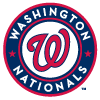 Luis Garcia Jr., 2B, Nationals: Garcia was a somewhat divisive player during draft season. His fans (like me) saw a player who broke out to the tune of a .282 average with 18 homers and 22 steals last year in his age-24 season and had the potential to even reach new heights in his age-25 campaign. His detractors saw an unproven player who had been platooned for most of last year and would likely be stuck in a platoon again this season.
Luis Garcia Jr., 2B, Nationals: Garcia was a somewhat divisive player during draft season. His fans (like me) saw a player who broke out to the tune of a .282 average with 18 homers and 22 steals last year in his age-24 season and had the potential to even reach new heights in his age-25 campaign. His detractors saw an unproven player who had been platooned for most of last year and would likely be stuck in a platoon again this season.
Thus far, it's the pessimists who appear prescient. Garcia has only started against one of four lefties so far, and that came while CJ Abrams was out with a day-to-day injury. At full strength, Garcia appears to be firmly a platoon player, and nothing he's done at the plate has hinted that he deserves a larger role. He's slashing .200/.216/.343 with one homer through 10 games, though he does at least have two steals.
Garcia's underlying numbers aren't terrible, though, as he's striking out just 13.5 percent of the time and has a career-high 9.7 percent barrel rate. That would be enough to make him a buy-low if he had an everyday role, and it's enough reason to hold onto him in most formats. In particularly shallow leagues, though, very few platoon players are rosterable, and with little reason to believe Garcia will begin starting against lefties on a regular basis any time soon, a drop is worth considering.
Looking for more fantasy information? Check out RotoWire's MLB Daily Lineups and Fantasy Baseball News & Latest MLB Updates!


